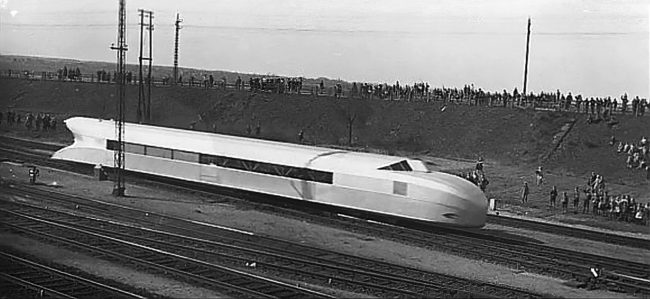The Schienenzeppelin was an experimental railcar resembling a Zeppelin airship, designed by German engineer Franz Kruckenberg in 1929.
Powered by a rear-mounted pusher propeller, it achieved a top speed of 230.2 km/h (143 mph), setting a land speed record for petrol-powered rail vehicles. Only one prototype was built, and due to safety concerns, it was dismantled in 1939. The design was influenced by the earlier Russian Aerowagon, which also used an aircraft engine and propeller.
h/t: vintag.es
Constructed in early 1930 by the German Imperial Railway Company, the Schienenzeppelin measured 25.85 meters long with a streamlined aluminum body. It initially featured two BMW IV 6-cylinder engines, later replaced by a single BMW VI 12-cylinder engine. On May 10, 1931, it exceeded 200 km/h for the first time and was publicly exhibited across Germany. On June 21, 1931, it set a world railway speed record on the Berlin–Hamburg line.
In 1932, Kruckenberg modified the railcar, adding a new front end with a two-axle bogie and hydraulic power transmission. Despite reaching 180 km/h in 1933, the prototype faced numerous issues. The Deutsche Reichsbahn developed the Fliegender Hamburger in 1933, which incorporated many of Kruckenberg’s ideas but was more suited for regular service. Ultimately, the Schienenzeppelin’s open propeller design and inability to pull additional wagons hindered its practicality, and it was dismantled in 1939.
